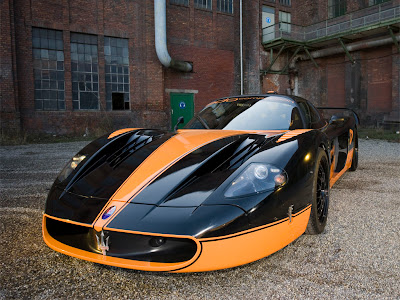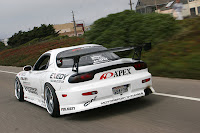
 The dream of every high-performance tuner is access to the best, most durable, precise components; intelligent and adaptable control systems; and progressive, appealing styling.
The dream of every high-performance tuner is access to the best, most durable, precise components; intelligent and adaptable control systems; and progressive, appealing styling.It’s the dream of every high-performance tuner to transform that excellence into the extraordinary, to create exhilarating answers to the question, “What if…?”
Volkswagen shares this drive to push the dynamic and aesthetic boundaries of its vehicles. The vast network of engineers and designers within VW’s worldwide reach never need to be urged to challenge conventional wisdom, and this philosophy is reflected not only in the unique character of VW’s production vehicles, it’s also fully displayed in a stunning ultra-high-performance Passat R GT built for SEMA 2005 in combination with HPA Motorsports.
The Passat R GT is not just flights of fancy branding. The badging on this one-off tells a story of advanced platforms enriched with strategic applications of factory and aftermarket expertise.
 The Passat R GT was born from a European-spec 2006 Passat 3.2 V6 FSI with DSG transmission and 4MOTION all-wheel drive. A rewarding runner in its own right, the European Passat 3.2’s powerful engine, world-beating transmission and all-wheel grip provide an excellent basis for a SEMA special. The mechanical transformation by HPA resulted in dynamics that launch the Passat R GT into supercar dimensions, and its sleek, entirely modern bodywork was given the muscular look of a highly toned European high-performance sedan by Volkswagen designers.
The Passat R GT was born from a European-spec 2006 Passat 3.2 V6 FSI with DSG transmission and 4MOTION all-wheel drive. A rewarding runner in its own right, the European Passat 3.2’s powerful engine, world-beating transmission and all-wheel grip provide an excellent basis for a SEMA special. The mechanical transformation by HPA resulted in dynamics that launch the Passat R GT into supercar dimensions, and its sleek, entirely modern bodywork was given the muscular look of a highly toned European high-performance sedan by Volkswagen designers.Modifications begin with a twin-turbo conversion package that features dual exhaust manifolds, each carrying a Garrett GT25R ball-bearing turbocharger. Charge cooling is optimized by twin intercoolers, and the exhaust gases pass through a quad bypass emissions system that retains the stock catalytic converters. It boasts an extraordinary output of 575 horsepower and massive torque to match.
 The Passat R GT's track-prepped chassis is suspended by a KW Variant 3-way coil-over racing setup, and the required upgraded braking is supplied by the Brembo-supplied system available on the Phaeton. The Passat R GT rides on the same high-performance Michelin radials as fitted to the Jetta R GT, as well as the forged-aluminum Avus alloy wheels. HPA also modified the DSG gearbox for more revs between each upshift to match the engine’s increased output.
The Passat R GT's track-prepped chassis is suspended by a KW Variant 3-way coil-over racing setup, and the required upgraded braking is supplied by the Brembo-supplied system available on the Phaeton. The Passat R GT rides on the same high-performance Michelin radials as fitted to the Jetta R GT, as well as the forged-aluminum Avus alloy wheels. HPA also modified the DSG gearbox for more revs between each upshift to match the engine’s increased output.Volkswagen’s California design studio chose gleaming candy white paint to clothe the modified bodywork, consisting of new front and rear bumper fascias and side rocker panels. Contrasting black leather cloaks the interior, offset by touches of white piano lacquer trim, a white Apple iPod module up front and a white Sony PSP in the rear. Of course, befitting a car that can cross Europe in hours, it features VW’s highest-quality sound system and full navigation.



























































